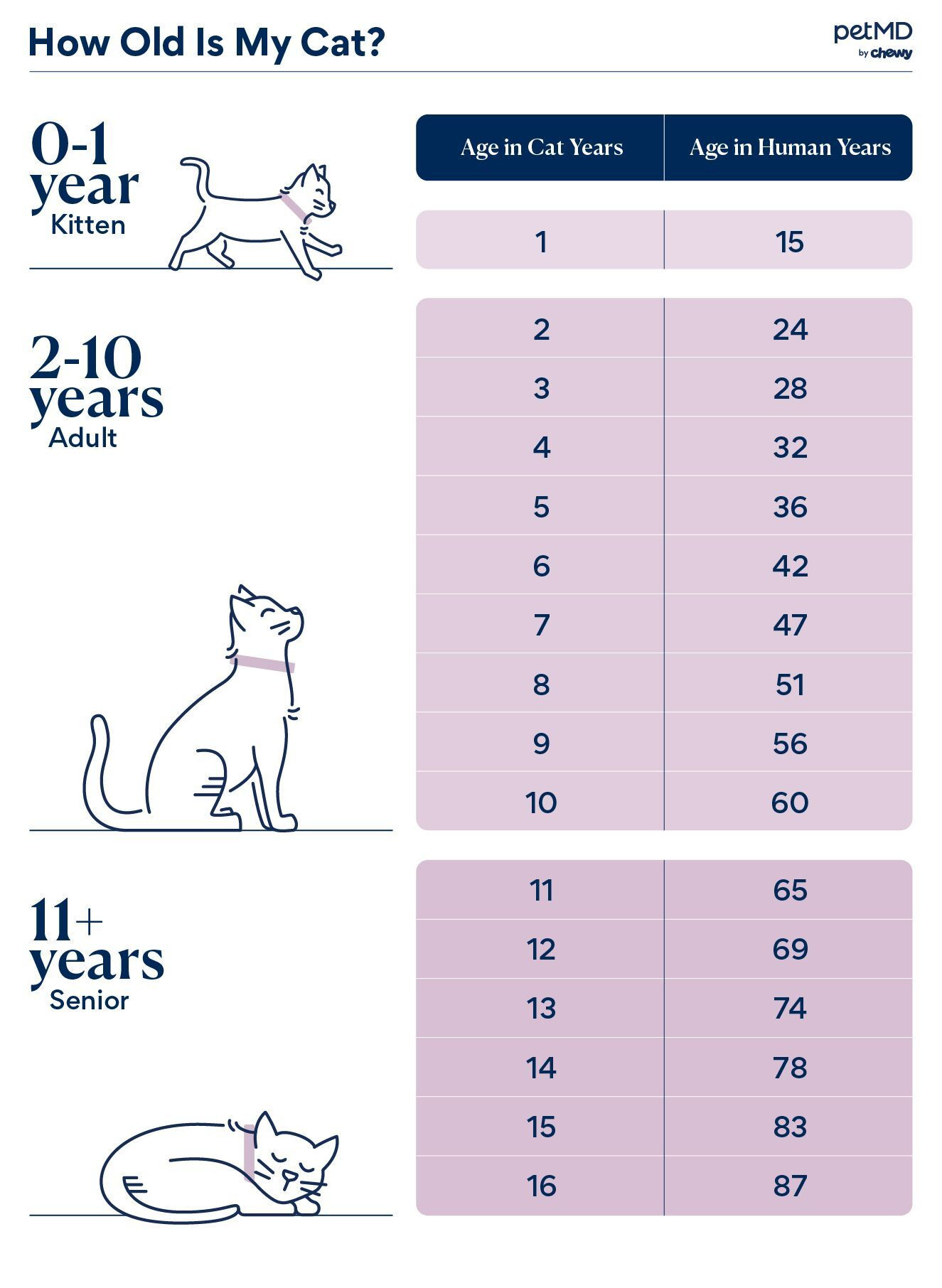Cat lovers often think of their feline friends as family members and celebrate their birthdays. However, understanding how cats age isn’t as simple as marking off calendar years. Unlike humans, cats experience different aging rates throughout their lives.
“Thinking about cat years in terms of human years helps us understand their aging process in relation to our own,” explains Dr. Mary Gardner, DVM, a veterinarian and co-founder of Lap of Love Veterinary Hospice. “Just like elderly humans might face mobility challenges, an 11-year-old cat, which is around 60 in human years, could also experience similar age-related difficulties.”
So, if you’ve ever wondered, How Do Cats Age and how old your kitty is in human terms, let’s explore the fascinating world of feline aging.
Key Points to Remember
- In their first year, cats age rapidly, reaching approximately 15 human years.
- Breed plays a minimal role in a cat’s aging process; most cats age at a comparable rate.
- Veterinarians have several methods to estimate a cat’s age if their exact birthdate is unknown.
Understanding Cat Years vs. Human Years
The common myth of multiplying a cat’s age by seven to get their human age equivalent is inaccurate. The aging process in cats is much more nuanced, especially in their early years.
According to the American Veterinary Medical Association (AVMA), a cat’s first year is equivalent to about 15 human years. By their second year, they reach an age of approximately 24 human years. After this initial rapid aging, cats slow down, aging about four human years for every subsequent cat year.
Regardless of breed, the aging trajectory of cats remains relatively consistent.
Calculating Your Cat’s Age in Human Years
Refer to the chart below to quickly convert your cat’s age into human years and gain a clearer picture of their life stage.
 A infographic chart detailing the age conversion of a cat
A infographic chart detailing the age conversion of a cat
Cat age in human years infographic chart for easy conversion.
Determining Your Cat’s Age When Unknown
Many cat owners adopt their feline companions without knowing their precise birthdate, often celebrating a “gotcha day” instead. However, knowing your cat’s approximate age is vital for providing appropriate care throughout their life. Veterinarians are skilled at estimating a cat’s age using several indicators:
- Teeth: Dental examination is a primary method. Kittens develop their permanent teeth around 3-4 months. Tartar buildup, tooth wear, and gum disease can indicate older age.
- Coat: Younger cats typically have soft, fine fur. As cats age, their coat might become thicker, coarser, and potentially include gray hairs.
- Eyes: Bright and clear eyes are common in young cats. Older cats may develop cloudiness in their eyes.
- Muscle Tone: Kittens and young cats are usually muscular and toned. Senior cats may experience muscle loss and reduced definition.
Cat Lifespan and Longevity
Thanks to advancements in veterinary medicine, improved nutrition, and the strong bonds between humans and their cats, our feline companions are living longer, healthier lives.
“The average cat lifespan ranges from 12 to 15 years. Purebred cats tend to live around 12.5 years, while mixed-breed cats often live a bit longer, approximately 14 years,” Dr. Gardner notes.
Understanding how do cats age and their corresponding life stages empowers you to provide the best possible care for your furry friend at every stage of their life, ensuring they remain happy and healthy for years to come.
Featured Image: iStock/Drazen_
WRITTEN BY
Janelle Leeson
Freelance Writer
